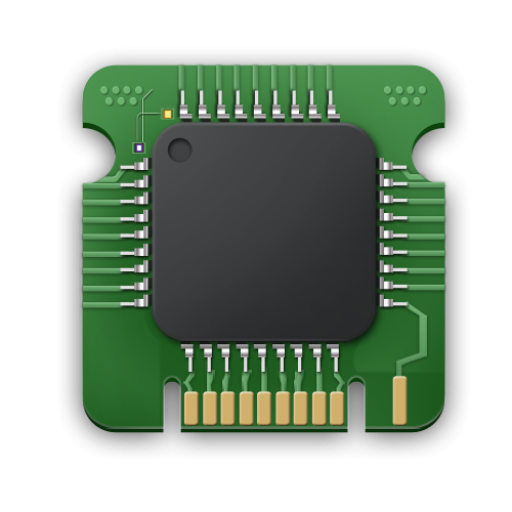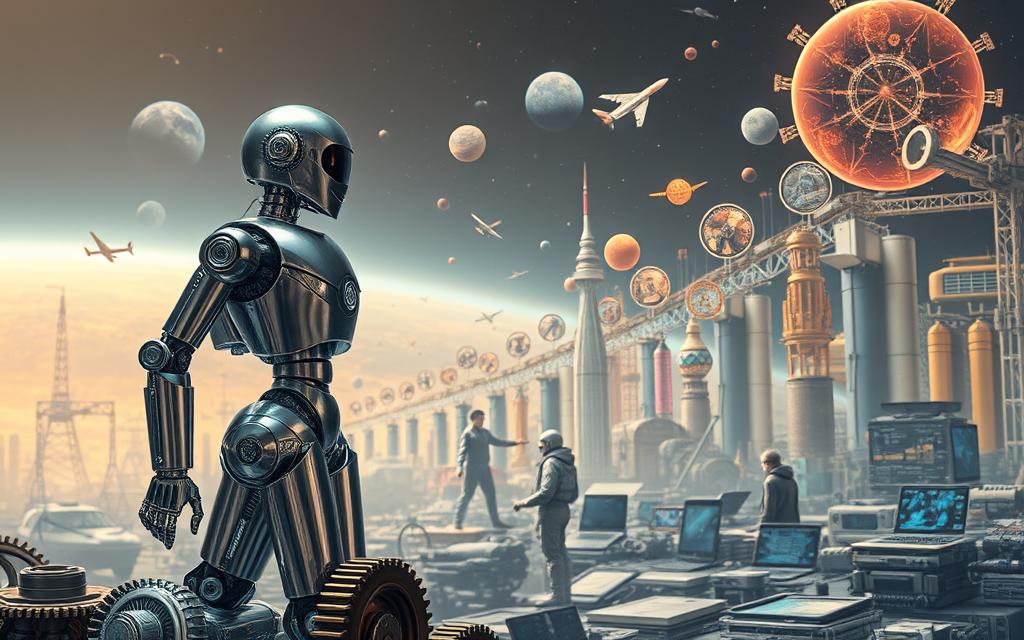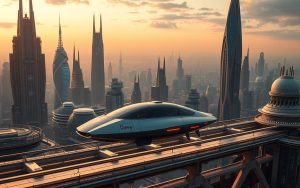Human progress is marked by world-changing inventions. From the first flint tools 3.3 million years ago to ChatGPT’s 2022 launch, technology has been key. These innovations have changed how we live, work, and see the world.
Fire and the wheel are prime examples. Fire allowed for cooked food, while the wheel changed transport and trade. These changes were huge, affecting everything from daily life to entire societies.
The speed of progress has grown exponentially, as shown by spiral timeline visualisations. Early achievements took thousands of years, like the use of fire 1.7 million years ago. But recent breakthroughs, like steam engines and microchips, came much faster.
Three major shifts have shaped our world: the rise of agriculture, the factory system, and digital networks. Each change brought new ways of living and working, making old ways seem outdated. These changes happened in just a few generations.
Today, artificial intelligence is leading to new breakthroughs. Looking back, it’s clear that technology doesn’t just influence history. It writes it.
Early Technological Foundations
Human progress has been driven by innovations from thousands of years ago. Before electricity or microchips, three key developments changed society. These were agricultural tools, engineering feats, and ways to share information.
From Stone to Civilisation
1.1 Agricultural Revolution Tools
Neolithic tools helped people settle down and start farming. Early tools included:
- Flint sickles for harvesting grains
- Polished stone axes for land clearance
- Clay-lined storage pits for crop preservation
These tools led to more people and better food, thanks to ancient irrigation systems. For example, Mesopotamian canals increased crops by 300% in dry areas.
1.2 Ancient Engineering Marvels
Old societies showed amazing skill in engineering. They built:
- Egyptian pyramids using ramps
- Roman concrete that lasts in the sea
- Chinese seismometers to detect earthquakes
The 50-mile Nîmes aqueduct is a top example of ancient engineering. It had a very slight slope.
Democratising Knowledge
1.3 Gutenberg’s Movable Type
In 1439, Johannes Gutenberg changed how books were made. His invention had:
- Reusable metal type pieces
- Oil-based printing ink
- Adapted wine press mechanism
This made books much cheaper and faster to make. Before, it took years to write a book by hand.
1.4 Renaissance Information Explosion
By 1500, Europe had printed 20 million books. This spread knowledge:
- Helped science communicate clearly
- Challenged old power structures
- Increased city literacy from 5% to 30%
Print shops were like today’s tech startups. Venice alone had 150 presses by 1550.
How Does Technology Changed the World Through Industrialisation
The 19th century saw a big change with steam power and transport networks. This led to a huge leap in human productivity and global connections. New mechanical ideas created systems that would shape industries for many years.
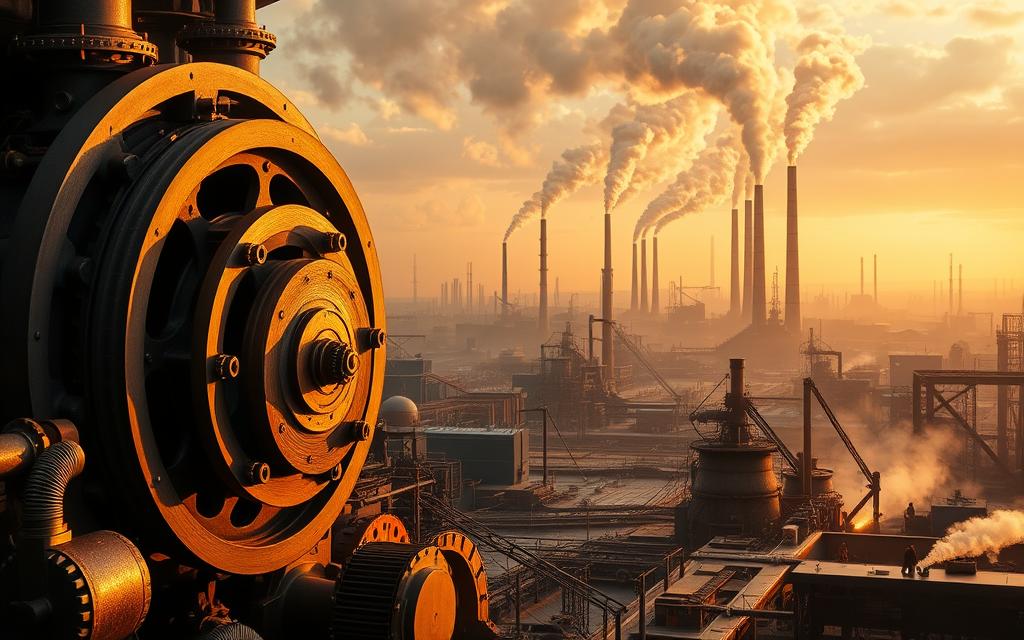
Steam Power Transformation
2.1 James Watt’s Improvements
In 1776, James Watt made a big change to the steam engine. His Boulton-Watt engine used 75% less coal. This made factories work better, even away from water, leading to city growth.
Watt’s design powered big machines for making textiles. This was a huge step forward.
2.2 Factory System Emergence
Steam power led to big factories instead of small homes for making things. Manchester’s cotton mills were a key example. They had hundreds of workers under one roof.
This new factory system brought:
- Standardised work hours
- Division of labour systems
- Mass-produced consumer goods
Transportation Networks
2.3 Railway Expansion
In 1829, George Stephenson’s Stephenson’s Rocket set a speed record of 36 mph. This showed steam railways could be profitable. By 1850, Britain had 6,000 miles of track.
This enabled fast and efficient transport, changing the game for:
| Before Railways | After Railways |
|---|---|
| 7-day coal delivery | 24-hour delivery |
| Local markets | National supply chains |
2.4 Transatlantic Steam Shipping
In 1838, Isambard Brunel’s SS Great Western cut Atlantic crossing times to 15 days. This changed trade between continents. Steamers carried:
- American cotton to Lancashire mills
- British textiles to global markets
- European migrants to new continents
These advances made economies around the world more connected. They set the stage for today’s globalisation.
20th Century Technological Leaps
The 1900s saw huge advances that changed how we live. These changes mixed old-fashioned making with new digital ideas. This mix helped create our modern world.
Mass Production Era
3.1 Ford’s Assembly Line
In 1913, Henry Ford changed making things with his Model T production. He used moving assembly lines to make cars faster. Before, it took 12 hours, but now it was just 93 minutes.
Workers focused on one thing, making things better and cheaper. This made cars affordable for many people.
3.2 Consumer Culture Development
Standardised making things led to a new economic world. Appliances and radios became common, thanks to ads. Families could buy things on credit, starting a new way of shopping.
This new way of shopping changed how we buy things today.
Digital Foundations
3.3 ENIAC Computer Creation
The 1945 ENIAC computer showed the need for better tech. It was huge and used lots of power but broke down a lot. Every day, teams had to fix it.
This showed we needed something better than vacuum tubes.
3.4 Transistor Invention
In 1947, Bell Labs made a big change. They invented the first working transistor. It was smaller and used less power than old tech.
These tiny devices:
- Used 1/100th the power of vacuum tubes
- Operated cooler and faster
- Enabled compact circuit designs
This breakthrough made electronics smaller. Soon, we had computers in space and at home.
Medical Advancements Reshaping Society
Medical technology has changed how we fight diseases and perform surgeries. It includes new vaccines and surgeries that are less invasive. These show how science and practical use can come together.
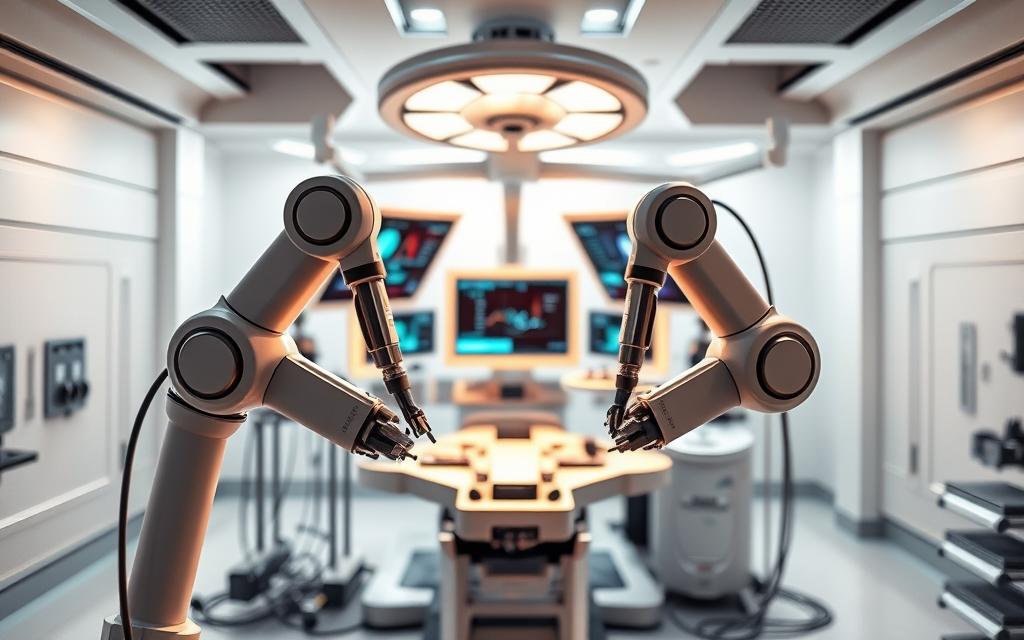
Vaccination Breakthroughs
The Jennerian vaccination method started with Edward Jenner’s smallpox vaccine in 1796. It used cowpox virus to create a model for future vaccines.
4.1 Smallpox Eradication
By 1980, the world worked together to wipe out smallpox. They did this through:
- Mass vaccination campaigns
- Surveillance-based containment strategies
- Standardised freeze-dried vaccine formulations
4.2 mRNA Vaccine Development
The COVID-19 response showed mRNA vaccines’ power. They were made in under a year. These vaccines teach cells to fight viruses without using live pathogens. Studies show they can quickly adapt to new virus strains.
Surgical Innovations
Today’s operating rooms focus on precision and quick recovery. New methods mean smaller cuts and less damage.
4.3 Laparoscopic Techniques
Keyhole surgery offers big benefits:
- 2-3cm incisions instead of 15-20cm
- Hospital stays cut from 7 days to 48 hours
- Infection rates drop by 60%
4.4 Robotic Surgery Systems
The da Vinci Surgical System improves surgery with:
| Feature | Benefit | Patient Impact |
|---|---|---|
| 3D HD Vision | 10x magnification | Precise tumour removal |
| Wristed Instruments | 540° rotation | Reduced nerve damage |
| Tremor Filtering | 0.5mm accuracy | Faster recovery times |
Digital Age Transformation
The 21st century saw a big change with digital innovations. These changes changed how we talk, get information, and do business. This happened thanks to the internet growing and mobile tech becoming key.
Internet Evolution
5.1 ARPANET to World Wide Web
ARPANET started as a US military project in 1969. It became the internet we know today. The TCP/IP protocols helped networks talk to each other. Then, Tim Berners-Lee created the World Wide Web in 1989.
By 1993, web browsers made it easy for everyone to use the internet. This changed how we get information.
Facebook changed how we talk to each other on a big scale. Facebook growth metrics show this: from 1 million users in 2004 to 2.96 billion by 2023. It has made new ways to make money, start political movements, and share culture. But, it also raises questions about privacy and fake news.
Mobile Revolution
5.3 Smartphone Ubiquity
Smartphones started as a 1973 Motorola prototype. They became essential tools thanks to big changes:
- Qualcomm Snapdragon processors made mobiles smarter
- App stores created a £385 billion market
- Good cameras made standalone devices less needed
5.4 5G Network Rollout
5G networks make data sharing faster. This is key for:
| Application | 4G Latency | 5G Latency |
|---|---|---|
| Remote surgery | 50ms | 1ms |
| Autonomous vehicles | 30ms | 5ms |
| IoT devices | 100ms | 10ms |
This tech lets us connect 4.8 million devices per square kilometre. It helps make smart cities and automate industries.
Conclusion
Human progress is speeding up like never before. Max Roser’s work at Our World in Data shows AI could change economies quickly. This fast pace means we must talk about AI ethics now.
AI affects healthcare, jobs, and how we vote. It’s changing our world fast.
Sustainable innovation is key to growing without harming the planet. Renewable energy and circular manufacturing are good examples. They show how tech can help the environment and boost the economy.
We have to make smart choices about using these technologies. Can automation help everyone or widen gaps? Can quantum computing keep our data safe?
These big questions need answers from all of us. Governments, big tech companies, and civil society must work together. History shows we can solve big problems with teamwork and smart planning.
